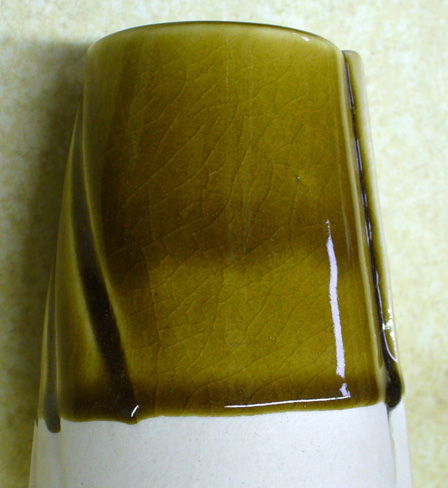A down side of high feldspar glazes: Crazing!
This reduction celadon is insight-live.com/trouble/2">crazing. Why? High feldspar. Feldspar supplies the oxides K2O and Na2O, they contribute the brilliant gloss and great color but the price is very high thermal expansion. Scores of recipes being traded online are high-feldspar, some more than 50%! There are ways to tolerate the high expansion of KNaO, but the vast majority are crazing on all but high quartz bodies. Crazing is a plague for potters. Ware strength suffers dramatically, pieces leak, the glaze can harbor bacteria and customers return pieces. The simplest fix is to transplant the color and opacity mechanism into a better transparent, one that fits your ware (in this glaze, for example, the mechanism is simply an iron addition). Fixing the recipe may also be practical. A 2:1 mix of silica:kaolin has the same Si:Al ratio as most glossy glazes, this glaze could possibly tolerate 10% of that. That would reduce running, improve fit and increase durability. Failing that, the next step is to substitute some of the high-expansion KNaO, the flux, for the low-expansion MgO, that requires doing some glaze chemistry.
Pages that reference this post in the Digitalfire Reference Library:
Feldspar, Na2O, Cone 10 mug is crazing after a year. That's OK because it's high-fire, right?, ChatGPT was completely wrong about the cause of glaze crazing in 2023!, A high feldspar glaze is settling, running and crazing. What to do?, Limit Recipe, Calculated Thermal Expansion, Glazy, Celadon Glaze, Glaze Crazing

This post is one of thousands found in the Digitalfire Reference Database. Most are part of a timeline maintained by Tony Hansen. You can search that timeline on the home page of digitalfire.com.
